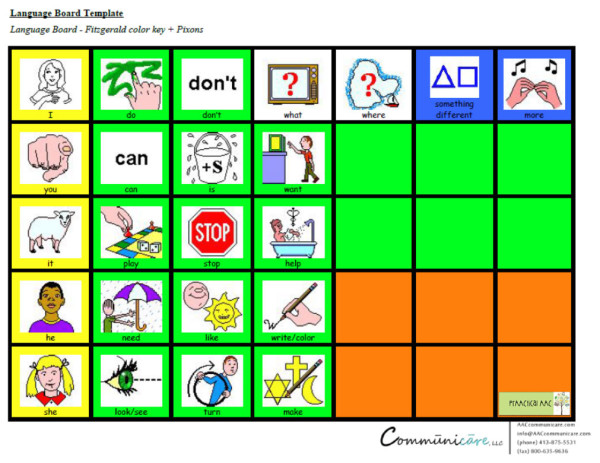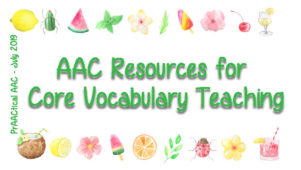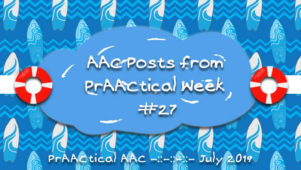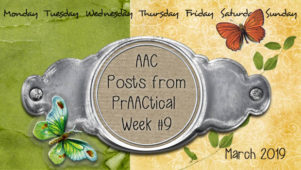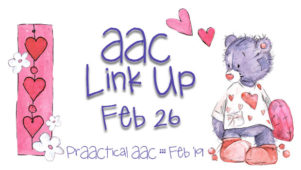How We Do It: Using Language Boards to Support AAC Use By Nerissa Hall and Hillary Jellison
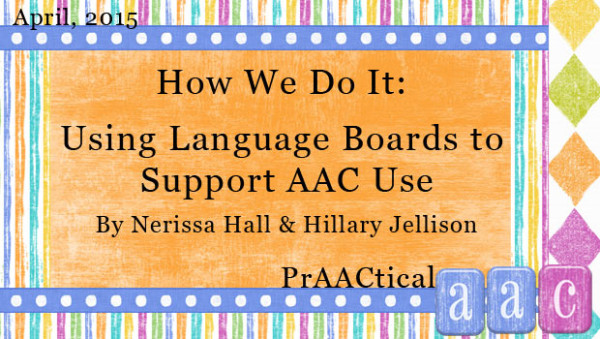
Many of you have reached out to say how much you’ve appreciated the prAACtical suggestions provided by Nerissa Hall and Hillary Jellison, New England-based SLPs and owners of Commūnicāre, LLC. We’re excited to have them back, especially because they are talking about something near and dear to our hearts: Implement a core vocabulary approach in their AAC therapy. In this post, they give us a peek into the ‘why’ and ‘how’ of making and using communication boards that are rich in core words. In their typically generous fashion, they also share templates for the boards that they make.
How We Do It: Using Language Boards to Support AAC Use
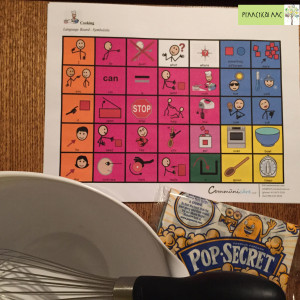
There are a number of different strategies one can use to support an individual’s use of augmentative and alternative communication (AAC). We know that aided language stimulation, augmented input, and AAC modeling are important and effective ways of supporting AAC use. By using AAC in combination with our spoken message, we are providing the individual using AAC with an appropriate model of multi-modal communication and device use. However, sometimes less familiar communication partners report uneasiness with using an individual’s AAC system, as well as uncertainty regarding how to navigate the system and what words and/or phrases to use. We have found that using low-tech language boards provides a nice opportunity to not only promote AAC modeling and expose the individual to similar systems and icons, but to do so without worrying about knowing how to navigate the AAC system or comparable device.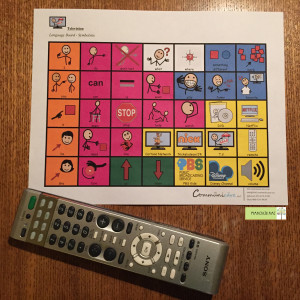
Low-tech language boards are typically one page and combine a combination of core and fringe vocabulary. Core vocabulary is approximately 20% of our vocabulary that we use 80% of the time and is comprised of pronouns, verbs, some adjectives and more. This set is contrasted to fringe vocabulary, which makes up approximately 80% of our vocabulary but is used only 20% of the time. Fringe vocabulary is mainly nouns and is oftentimes context-dependent. Designing language boards to offer a careful balance of core and fringe vocabulary is critical, as this combination supports participation related to a specific topic, as well as language modeling and advancement.
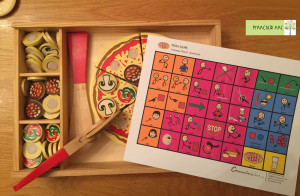
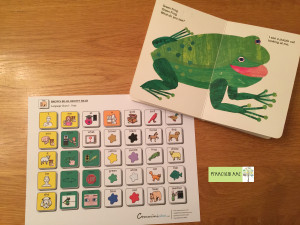
In addition, careful color-coding and icon selection serve to simultaneously support an individual’s understanding of the linguistic code of his or her device. Different parts of speech are color-coded according to the color-coding system of the device (for example Proloquo2Go follows the Goossens, Crain & Elder code, whereas Prentke Romich systems use the Fitzgerald key). This serves to help with visual scanning as well as language comprehension and learning. Using low-tech language boards with the same color-coding reinforces this and also supports prompting (i.e., “it is a green, action word”). Similarly, by using the same icons on the language boards as are on the individual’s device, we are exposing them to the symbol set and modeling how to use the symbols to communicate.
Please feel free to download our templates to develop your own language boards. You can even print, laminate and write/draw directly onto the laminate.
:::::::::::::::::::::::::::::::::::::::::::::::::::::::::::::::::::::::::::
Resource Links:
Communicare, LLC: www.AACcommunicare.com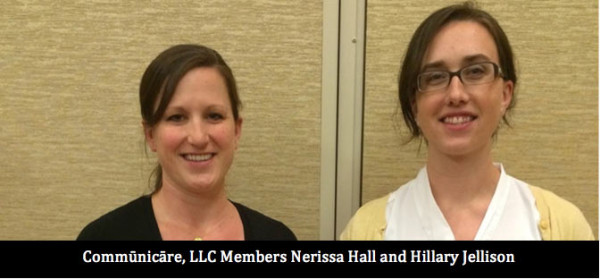
Nerissa Hall, PhD. CCC-SLP, ATP (hall@AACcommunicare.com) and Hillary Jellison, MS. CCC-SLP, ATP (Jellison@AACcommunicare.com), members of Commūnicāre, LLC are speech-language pathologists specializing in Augmentative and Alternative Communication (AAC), Assistive Technology (AT), telepractice, and tele-AAC. They focus on the systematic application of technology and innovative, evidence-based teaching methodologies and techniques to enhance an individual’s independence and progress towards specific goals, as well as support the skill advancement of multiple team members.
Filed under: PrAACtical Thinking
Tagged With: Communicare, Hillary Jellison, language boards, Nerissa Hall, resources
This post was written by Carole Zangari

